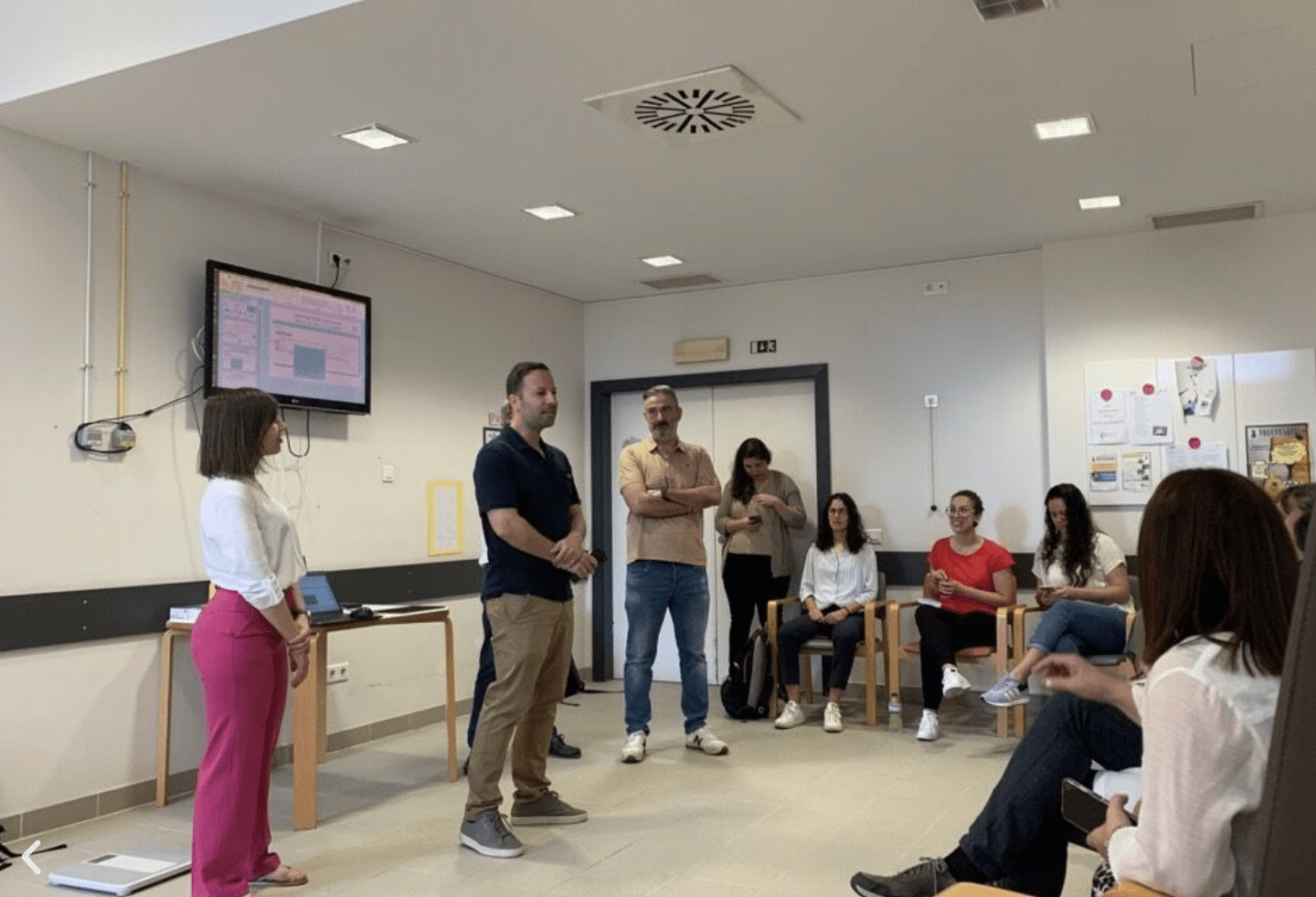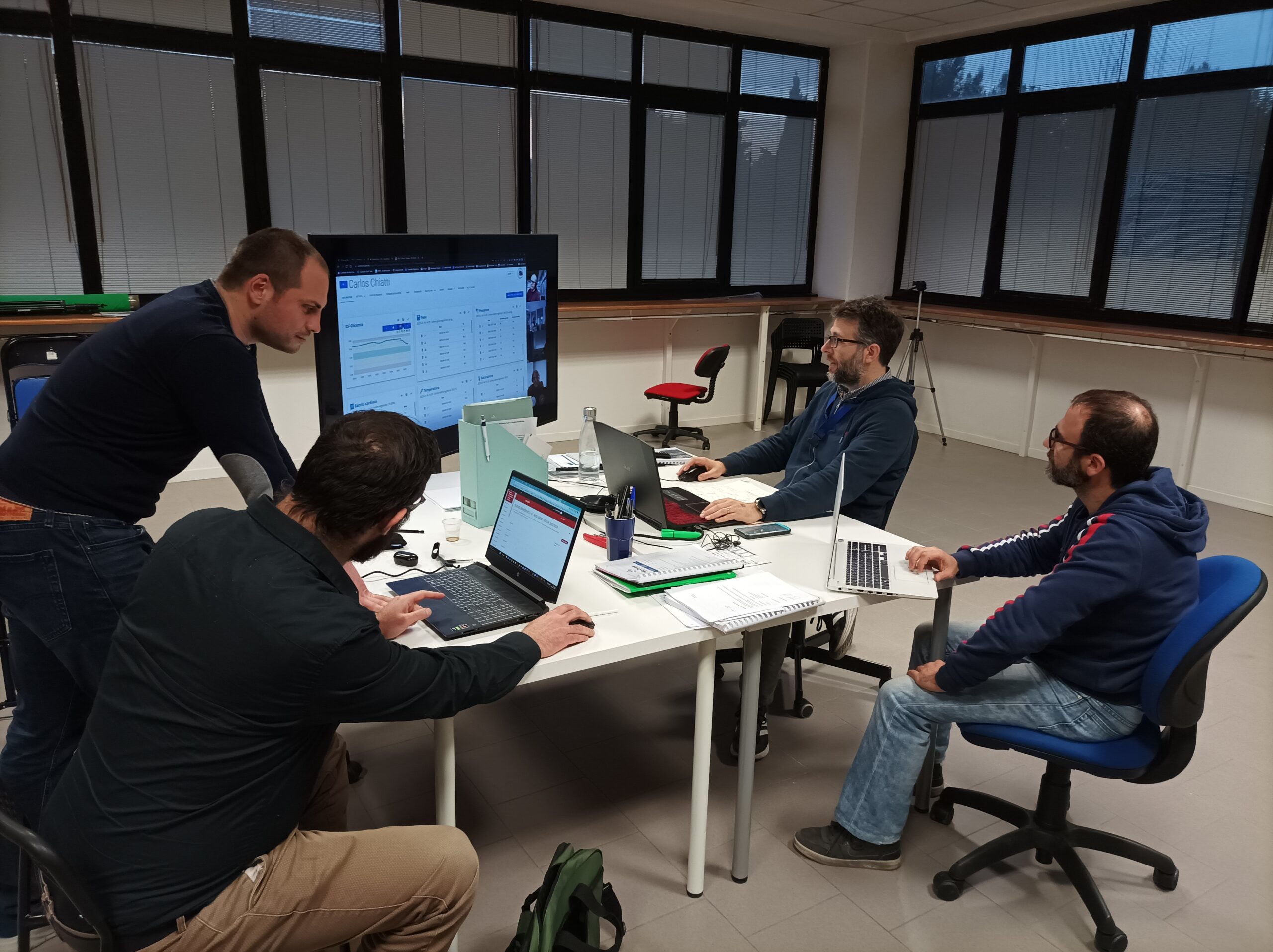Recently, our project carried out our second set of prototype tests, allowing people living with chronic heart failure (CHF) and the carers and professionals around them to guide us as we further iterate our solutions.
Earlier this year, our pilot teams and suppliers held initial sessions to show potential end-users the initial idea for the solutions. Our suppliers than took that feedback on board as they developed their solutions in the following months.
In our latest round of sessions, users got to experience a more complete, hands-on version of the solutions, and gave even more valuable advice as we head into the next phase of the project.
Reflecting on these sessions, here’s what our Phase 2 suppliers had to say:
CORRAL
How did this compare to the first prototype test?
The second prototype testing was a unique experience. In comparison with the first prototype testing, we met in person and interacted with the health professionals and patients from five different countries who enabled us to acquire a deeper understanding of their experiences and challenges, and gave us valuable feedback about the advantages of the CORRAL solution, as well as directions for further improvement. The ability to engage in spontaneous discussions and follow-up inquiries created a dynamic and collaborative environment, fostering a more comprehensive exploration of user needs and preferences. The discussions we made were fruitful, and we are certain that they will drive CORRAL to enhance its usability and meet the reflected expectations and needs in the best possible way.
What was the most important feedback you received?
All feedback we received was equally important. Every individual’s experience and viewpoint bring unique perspectives and considerations that may have otherwise been overlooked. By embracing and integrating diverse feedback, we can enhance the digital health system’s usability, functionality, and overall effectiveness, ultimately leading to better outcomes for all users and stakeholders involved.
How did it feel to see people interact with your solution?
Seeing people interacting with the CORRAL solution facilitated immediate clarification of questions, and ensured a more accurate comprehension of user feedback. It was deeply rewarding to witness users embracing the system, navigating its features, and deriving value from it. Observing the engagement of people with our solution, fueled our motivation to continue refining and enhancing the system, knowing that our efforts were making a tangible impact on patients’ empowerment and well-being.
CardioCare
How did this compare to the first prototype test?
The first prototype test took place in online platforms, so, we didn’t have the chance to interact with our target group and audience in-person. Thus, V2 tests and presentation are always more enjoyable as you travel and meet people from different countries and cultures. It makes us better individuals and professionals and makes us feel as part of a wider community. From a technical perspective, explaining our solution and product in person is always an advantage. In online presentations, it is harder to create an environment where participants express themselves freely and the most easily understandable ways. Therefore, we were able to present our solution in a more effective approach and response to our audience questions and feedbacks.
What was the most important feedback you received?
The participants at each demo presentation liked our solution and features generally. We have received significant criticism regarding our clinical platform, devices, or patient application, which will help us a lot in the future development work. However, both the clinicians and patients praised our approach and remarked that our solution has the potential to significantly improve their well-being. There is one feedback that was highlighted at each demo site; that our solution falls short to satisfy the needs of physically challenged individuals and our user interface needs to be reworked. Both participant profiles remarked that our target profile generally consists of people above 65 years of age and includes a significant portion of visually impaired patients. Thus, we embraced this criticism regarding our user interface and will transform it into a more user-friendly framework by adding more features and adjusting existing ones.
How did it feel to see people interact with your solution?
It is always a great feeling to see others using the solutions that you have been working on almost for a year. It is even better if those people are in conditions that need caring, and your solution provides much needed tools and means for their well-being. Our consortium members are experienced in PCP and Horizon 2020 projects and dedicated their careers to improve the daily lives of those in need of care. In this regard, it is a great but not an unfamiliar feeling for us. However, what was most interesting thing for us during this V2 demo presentations, we have managed to successfully analyse and address the needs of a target group of five different countries and different cultures.
CARECARDIA
How did this compare to the first prototype test?
The first prototype test was held remotely due to post-Covid doubts. Therefore, it came out that presenting in person a tech solution always contributes to more fruitful conversations and interactions. During the second prototype test a hands-on session was also considered both for the patients, caregivers and healthcare professionals (HCPs) that attended. Our perspective is that from our enthusiasm for these demos, all people that participated enjoyed the procedure a lot. It is a very positive outcome that patients are getting more and more familiar with digital skills and solutions that can help them improve their quality of life and manage their disease easier.
What was the most important feedback you received?
In terms of HCPs its reasonable that a solution designed to help them in their daily working routine must convince them about its cost effectiveness. In simple words, it has not only to do with interesting and fancy tools but also (and mostly) with reducing their effort during the monitoring of their patients.
On the other hand and from the perspective of patients, we understood that despite the needs of patients themselves, it is also very important that their caregivers find this solution helpful and useful in order to trust the usage of it for a better life of their favorite people.
How did it feel to see people interact with your solution?
It was a great reward for us watching them using the fully functional version of our solution without meeting any difficulty. Checking carefully their reactions for each component and functionality helped us also a lot to depict minor details that we could improve further for an even more friendly environment to use.


